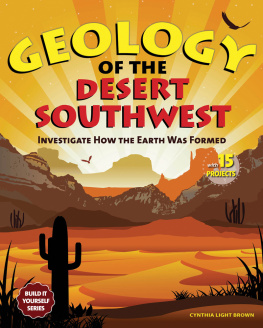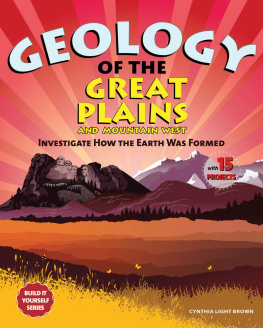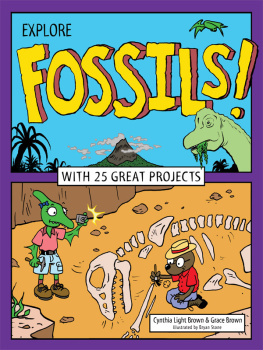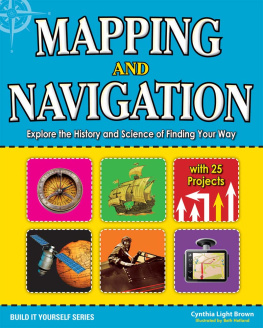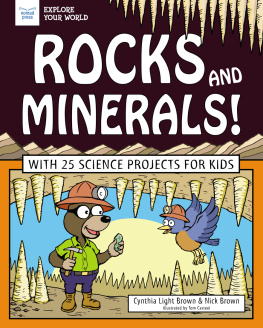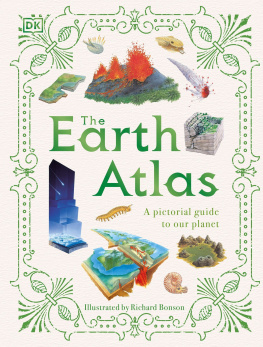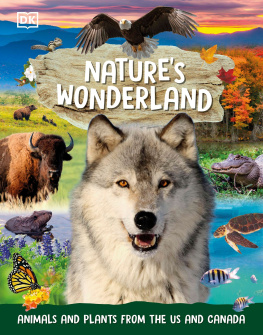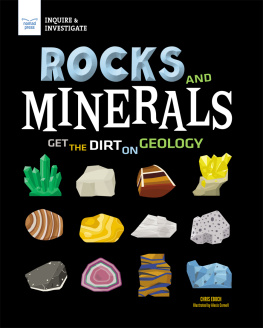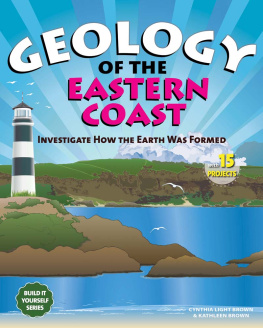



Nomad Press is committed to preserving ancient forests and natural resources. We elected to print Geology of the Desert Southwest: Investigate How the Earth Was Formed on 4,507 lbs. of Williamsburg Recycled 30 percent offset.
Nomad Press made this paper choice because our printer, Sheridan Books, is a member of Green Press Initiative, a nonprofit program dedicated to supporting authors, publishers, and suppliers in their efforts to reduce their use of fiber obtained from endangered forests. For more information, visit www.greenpressinitiative.org
Nomad Press
A division of Nomad Communications
10 9 8 7 6 5 4 3 2 1
Copyright 2011 by Nomad Press. All rights reserved.
No part of this book may be reproduced in any form without permission in writing from the publisher, except by a reviewer who may quote brief passages in a review or for limited educational use. The trademark Nomad Press and the Nomad Press logo are trademarks of Nomad Communications, Inc.
This book was manufactured by Sheridan Books,
Ann Arbor, MI USA.
August 2011, Job # 328316
ISBN: 978-1-936313-40-2
Illustrations by Eric Baker
Educational Consultant, Marla Conn
Questions regarding the ordering of this book should be addressed to Independent Publishers Group
814 N. Franklin St.
Chicago, IL 60610
www.ipgbook.com
Nomad Press
2456 Christian St.
White River Junction, VT 05001
www.nomadpress.net
CONTENTS
INTRODUCTION

GEOLOGY & GEOGRAPHY
T he Desert Southwest is a place of searing heat and dry canyons. Its also a land of mountains covered in snow and towering cacti. You can find some of our nations great landmarks here, like the Grand Canyon and Death Valley.
WORDS TO KNOW
desert: an ecosystem that lacks water, receiving 10 inches or less of precipitation each year. Rain or snow is not evenly distributed throughout the year.
Why does this region hold the great deserts of the United States and one of the largest canyons in the world? It has to do with the shape of the land that was formed billions of years ago, and that is still being shaped today.

In this book, youll learn about the great forces that have shaped the mountains, valleys, and plains of the Desert Southwesthow things got where they are, and why. Youll learn about the physical systems, like the weather, rivers, and ecosystems. Along the way, youll collect some interesting facts, such as why the region has the hottest location or the largest salt-water lake in North America. The experiments and projects will help you understand the concepts, like how a salty lake forms.
WORDS TO KNOW
ecosystem: a community of plants and animals living in the same area and relying on each other to survive.
geology: the scientific study of the history and physical nature of the earth.
atmosphere: the air surrounding the earth.
hydrosphere: the waters on the earths surface, including oceans, rivers, lakes, and water vapor in the air.
geography: the study of the earth and its features, especially the shape of the land, and the effect of human activity on the earth.
GEOLOGY:
MORE THAN JUST ROCKS
Most people think of geology as the study of rocks, but its much more. When you look at a rock, you can describe its color and shape. But what is even more interesting is how that rock formed, how it got to its present location, and why. That involves seeing the big picturethe picture of the whole earth. Geology is the scientific study of the history and physical nature of the earth. It involves the huge movements of the earths crust. It also involves the atmosphere and hydrosphere, because air and water affect the breakdown and formation of rocks.
GEOGRAPHY:
MORE THAN JUST STATES AND CAPITALS
When most people think of geography, they think of learning the names of capitals and states, or where the largest rivers and mountains are. All of that is important, but geography tells a bigger story. It gives us a big view of the land, and how people interact with the land.
There are two parts to geography: physical and cultural. Physical geography looks at the features of the earth and atmosphere. It includes mountains, rivers, and climate. Physical geography is a lot like geology, but is less about the big forces under the earths surface, and more about the shape of the land. Cultural geography looks at how people interact with the land, including population, agriculture, and recreation. Physical geography and cultural geography are closely tied together. For example, people depend on rivers for water, food, and transportation. But people can also affect rivers by building dams or cities on a river.
WORDS TO KNOW
climate: average weather patterns in an area over many years.
agriculture: growing plants and raising animals for food and other products.
dam: a barrier across a river to hold back and control the water.
vegetation: all the plant life in a particular area.
Physical features, like mountains, dont usually follow the exact outlines of states. The southern Rocky Mountains start in northern New Mexico and extend north through Colorado, Wyoming, Idaho, and Montana. When people say the Desert Southwest region, sometimes they mean just the states of New Mexico and Arizona, and sometimes they mean more than that.
This book covers the states of Texas, Oklahoma, Utah, Nevada, New Mexico, and Arizona, as well as southern Colorado, and the southern two-thirds of California. It focuses on the geology and physical geography of the Desert Southwest. Hawaii is mentioned because it is closest to the southwest region.
The Desert Southwest has occupied a unique place in the imagination and culture of America. At first the region seems barren, with little vegetation and water. But its wide-open spaces and unique ecosystems reveal a quiet beauty.
CHAPTER 1

PLATE TECTONICS
I ts no accident that the giant saguaro cactus grows in southern Arizona. Cacti need a dry climate, and southern Arizona receives very little rain. Thats no accident either. Much of the rain from the Pacific Ocean is blocked by mountains along the California coast.
Next page
